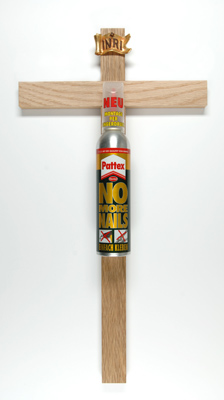
Golgatha, 2008
The Austrian artist applies a can of Pattex spray-glue with the advertising slogan "No More Nails" respectively to three simple oak crosses, denoted by the caption INRI as crucifixes, instead of the Jesus figure. Combining all this into a readymade ironises its individual components: the implicit hypothesis, that the Christian saviour could also have been crucified without nails but solely with glue, comes over as being as grotesque as it is blasphemous. The title and the organisation of the triple grouping Golgotha point laconically to the historical place of Jesus' crucifixion, a hill outside Jerusalem, and to his crucifixion together with two robbers – Schuster's artistic strategy is here frivolously blasphemous, if not openly provocative.
Michael Schuster, * 1956 in Graz (A), lives and works in Graz (A)
 Michael Schuster, Golgatha, 2008 Michael Schuster, Golgatha, 2008
oak crosses with aluminum spray can
3 multiples from edition No More Nails, 2005
56 x 25 x 8 cm
courtesy Artelier Contemporary, Graz
photo: Michael Schuster
|
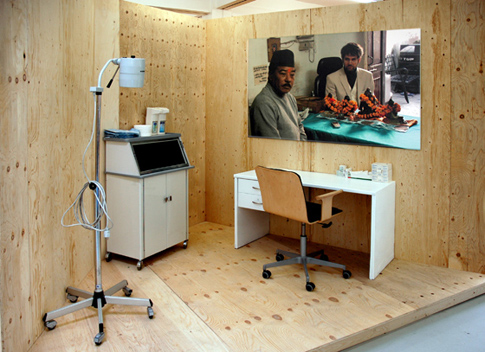
Der König wohnt in Mir, 2008
Prophecy, transience and religiosity are the basic themes at the core of the work, Der König wohnt in Mir [The King lives in me] by the action artist and director Christoph Schlingensief. On a stage of rough boards, he interweaves the filmic and photographic impressions of a journey to Nepal with the everyday course of a (Western socialised) sick person's sufferings and leads the observer through a sequence of rooms furnished with medical stage props: beginning in the waiting room, we pass through the consulting room, an operating theatre and recovery room as far as the place of leave-taking. Alongside photographs, each of the rooms receives one of the six external video fireplaces, which show pictures of monks, sacrificial ceremonies of a brickworks and a hospice in India. Schlingensief staged himself in them as a distanced traveller – which he, however, did not remain for long: only a short time after his return, he was diagnosed with a life-threatening illness. In a sense of foreboding, the previously created progression already ended in a Beuys Room (or also: a diagnostic room), which relates to the latter's installation zeige deine Wunde [Show your Wound] from the 1970s: this also took illness and transience as its topic and is simultaneously an avowal and an appeal, as according to Beuys, we "have to manifest the illness, we want to cure."
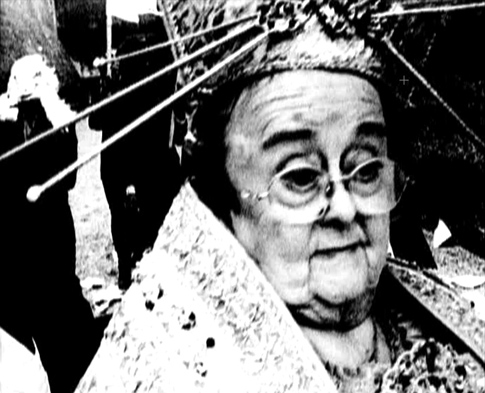
Drei Sonnen / Prozession, 2008
Christoph Schlingensief, * 1960 in Oberhausen (D), lives and works in Berlin (D)
 Christoph Schlingensief, Der König wohnt in Mir, 2008 Christoph Schlingensief, Der König wohnt in Mir, 2008
mixed media installation
4:44 min., loop
dimensions variable (space: 6,6 x 7,3 m, chimneys each 112 x 150 x 40 cm),
photographs: Aino Laberenz and Christoph Schlingensief, videos: Christoph Schlingensief, editing: Lilli Kuschel, Stefan Schmied and Christoph Schlingensief
installation view Kunstraum Innsbruck, 2008
courtesy Christoph Schlingensief & Kunstraum Innsbruck, 2008
photo: Leonard Schattschneider
Christoph Schlingensief, Drei Sonnen / Prozession, 2008
16-mm film digitalized (b/w, sound)
4 min., loop
film: Christoph Schlingensief
editing: Heta Multanen and Christoph Schlingensief
courtesy Christoph Schlingensief
|
|
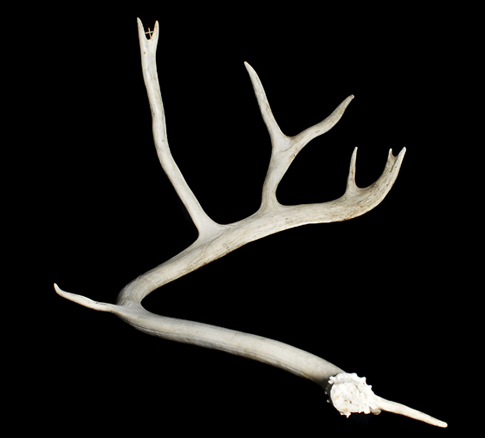
Abwurfstange, 1990
Alongside publications of experimental concrete and visual poetry, Konrad Balder Schäuffelen has been creating numerous language and book objects, audiovisual installations, photographs and sculptures since the 1960s. His work, Abwurfstange, displays shed deer antlers embellished with a small golden cross. In the spring, a process of decay at the point of the bony nodule on the stag's forehead loosens the antlers and they finally fall to the ground. Schäuffelen connect here to the legend of St. Eustace, who was one of the Roman emperor Trajan's generals and belongs to the Fourteen Holy Helpers. One day a stag with a cross among its antlers appeared to him, at which Eustace converted to Christianity. When Trajan's successor Hadrian demanded he make sacrifices to the Roman gods, he refused and died as a martyr.
Konrad Balder Schäuffelen, * 1929 in Ulm (D), lives and works in Munich (D)
 Konrad Balder Schäuffelen, Abwurfstange, 1990 Konrad Balder Schäuffelen, Abwurfstange, 1990
deer antler, gold
80 x 40 x 40 cm
courtesy Konrad Balder Schäuffelen, Müchen
photo: Jean-Marie Bottequin
|
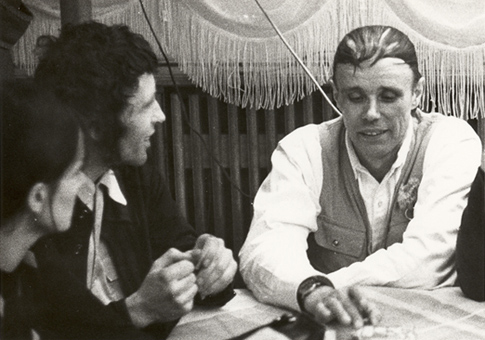
Günter Saree and Joseph Beuys at the opening of a
Beuys Exhibition, Galerie Klein, Bonn, April 10th, 1973
courtesy Erhard Klein, Bad Münstereifel
The works of the artist Günter Saree are heavily influenced by performance and concept art; characterised by linguistic structures and immateriality, they were often executed in public spaces.
Within the context of one of his later works, the Projekt zur Verkürzung der bewussten Lebenszeit [Project for Shortening the Conscious Time of Life], conceived for the documenta 5 in 1972, visitors were intended to be able to undergo a brief narcosis with the help of an anaesthetist. Forms they had to fill in beforehand informed them about the usual mortality rate (1:6000) of such a narcosis and contained questions regarding their preferences as to a funeral, should the need arise. A certificate subsequently presented to them was supposed to attest to the gap in their consciousness, the event however, was prevented through intervention by the Hessian Medical Association.
If, in this happening, Saree introduced the taboo subject of death into the context of art rather casually, he took a far more extreme step in the following year. Meanwhile incurably ill with cancer himself, he now made his own dying and death into a subject of his work for public consideration. Up until just before his death in May 1973, he went to exhibition openings – most often equipped with a tape recorder – where he involved the people present in conversations on death and how they imagined it. As artefacts various audio documents as well as photographs and signed X-ray-images of his cancer-stricken body testify to the way he himself dealt with it.
To make certain that he would be able to experience his death as he wished and "genuinely," from March 1973 onwards he carried a shroud he had designed with him, intending to put it on, even if he should collapse: "I AM GÜNTER SAREE AND I AM DYING. REMAIN CALM. CALL ONLY MY FRIENDS. COLOGNE 235837/249494/445704. REGARDLESS OF HOW MUCH I MAY SCREAM TO RELIEVE MY PAIN, NO DOCTOR MAY FALSIFY MY DEATH WITH ANY DRUGS."
In his final actions, Saree variously challenged the taboo surrounding dying and death: they testify, on one hand, to the desperation of a man terminally ill and to his wish not to depart unnoticed, and so they simultaneously anticipate today's discussions on determining our own dying. Above all, Saree treated the issue of how art treats death with arguable consistency (and not just representationally), irrevocably erased the boundaries between dying and performance, between life and art and so already anticipated the debate on Gregor Schneider's room for a dying person
Günter Saree, * 1940 in Eger (CZ), † 1973 in Cologne (D)

Günter Saree, documentary material, 1972–1973
courtesy Prof. Reiner Speck, Köln, und Erhard Klein, Bad Münstereifel
photo: Franz Fischer, Bonn
Günter Saree, Sterbetuch, 1973 (Rekonstruktion, 2008)
Joachim Hirling, ZKM | Center for Art
and Media Karlsruhe, 2008
|
|



